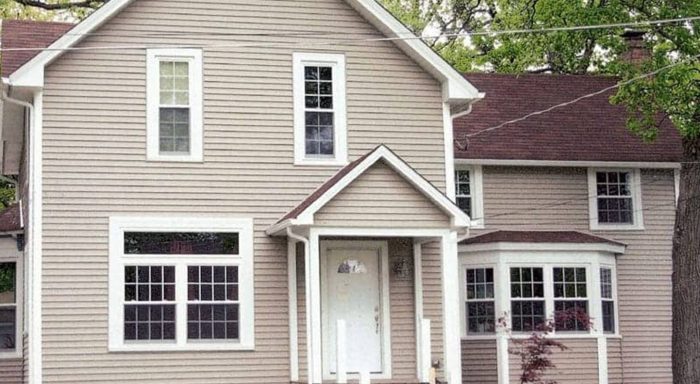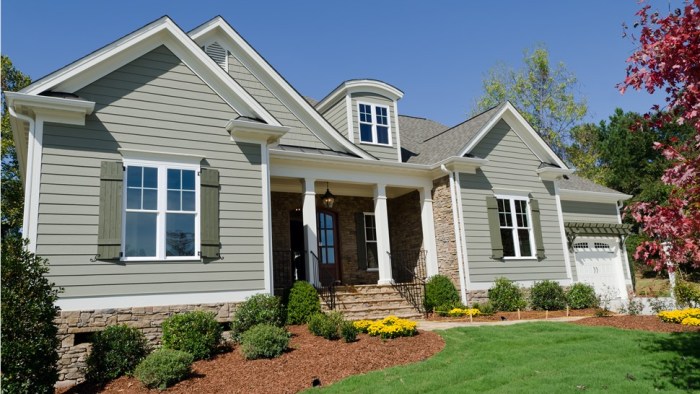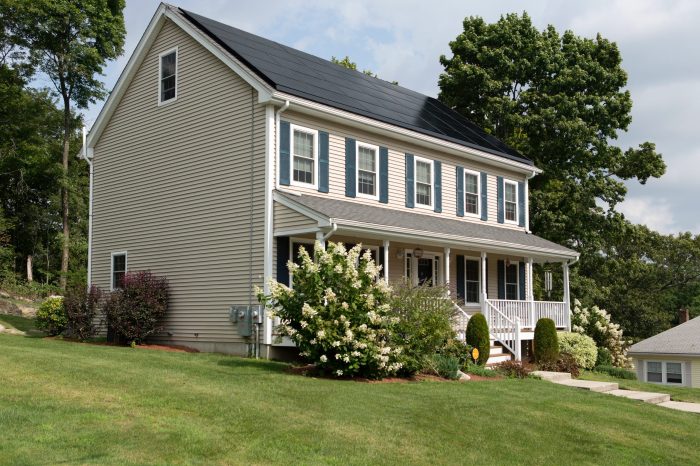Exploring the world of siding for homes near me opens up a realm of possibilities. From the variety of materials to the installation process, this guide will take you on a journey to discover the best options for your home.
Delve into the details of different siding materials, learn how to choose the right one for your area, and uncover maintenance tips to keep your home looking its best.
Types of Siding Materials

When it comes to choosing siding for your home, there are several different materials to consider. Each type of siding material has its own unique advantages and disadvantages, so it's important to weigh your options carefully.
Vinyl Siding
Vinyl siding is one of the most popular choices for homeowners due to its affordability and low maintenance requirements. It is available in a wide range of colors and styles, making it easy to customize the look of your home.
However, vinyl siding may crack or fade over time, and it is not as durable as some other materials.
Wood Siding
Wood siding offers a natural and traditional look that many homeowners love. It can be painted or stained to match your preferences, and it is relatively easy to repair. However, wood siding requires regular maintenance to prevent rot, pests, and weather damage.
It is also more expensive than vinyl or fiber cement siding.
Fiber Cement Siding
Fiber cement siding is a durable and low-maintenance option that can mimic the look of wood or stucco. It is resistant to rot, fire, and pests, making it a popular choice for many homeowners. However, fiber cement siding can be heavy and difficult to install, and it may require repainting over time.
Metal Siding
Metal siding, such as aluminum or steel, is known for its durability and resistance to fire, rot, and pests. It is also low maintenance and can be recycled at the end of its life. However, metal siding can dent easily and may be prone to corrosion in certain environments.
Choosing the Right Siding for Your Home

When selecting siding for your home, there are several factors to consider to ensure you make the best choice for your specific needs and preferences.Climate and weather conditions play a crucial role in determining the most suitable siding material for your area.
For example, if you live in an area with high humidity or frequent rain, you may want to choose a siding material that is resistant to moisture and mold. On the other hand, if you live in a region with extreme temperature fluctuations, you might opt for a material that provides better insulation.Additionally, matching siding colors and styles to enhance curb appeal can significantly impact the overall aesthetics of your home.
Consider the architectural style of your house and choose a siding color and texture that complements its design. You can also look at neighboring homes for inspiration and to ensure your choice fits in with the overall look of the neighborhood.
Matching Siding Colors and Styles
When selecting siding colors and styles, it's essential to consider the existing design elements of your home. Choose colors that complement the roof, windows, and doors to create a cohesive look. Additionally, consider the size and scale of your home to ensure the siding style enhances its overall appearance.
Considering Climate and Weather Conditions
Before choosing a siding material, research the climate and weather conditions in your area to determine the best option for durability and performance. For example, vinyl siding is a popular choice for its low maintenance and resistance to moisture, making it suitable for areas with high humidity or frequent rain.
Factors to Consider When Selecting Siding
Durability
Choose a siding material that can withstand the climate conditions in your area.
Maintenance
Consider the level of maintenance required for different siding materials and choose one that fits your lifestyle.
Cost
Evaluate the initial cost and long-term maintenance expenses of each siding option to find one that fits your budget.
Energy Efficiency
Look for siding materials that provide insulation to improve energy efficiency and reduce heating and cooling costs.
Siding Installation Process

When it comes to installing siding on a house, there are several important steps to follow to ensure a successful outcome. From preparation to finishing touches, each stage plays a crucial role in the overall process.
General Steps Involved
- Preparation: This involves removing any existing siding, repairing the underlying structure, and ensuring a clean and smooth surface for the new siding to be installed on.
- Measuring and Cutting: Accurate measurements are essential to ensure a proper fit. Cutting the siding panels to the right size is crucial for a seamless finish.
- Installation: Starting from the bottom and working your way up, each panel is secured to the house using the appropriate fasteners.
- Sealing and Finishing: Once all panels are in place, the seams are sealed, and any necessary finishing touches, such as corner pieces or trim, are added.
Tools and Equipment Needed
- Hammer or Nail Gun: For securing the siding panels to the house.
- Tape Measure: To ensure accurate measurements for cutting the siding panels.
- Circular Saw or Siding Cutter: For cutting the siding panels to the correct size.
- Level: To ensure the siding panels are installed straight and level.
- Caulk Gun: For sealing the seams between panels.
Common Challenges and Solutions
- Uneven Surfaces: Dealing with uneven surfaces can make installation challenging. One solution is to use furring strips to create a level mounting surface.
- Weather Conditions: Extreme weather conditions can impact the installation process. It's important to check the weather forecast and plan accordingly to avoid any delays or issues.
- Alignment and Fit: Ensuring that the siding panels are properly aligned and fit together seamlessly can be tricky. Taking accurate measurements and double-checking the fit before securing the panels can help prevent any issues.
Maintenance and Care for Different Siding Materials
Maintaining and caring for your home's siding is essential to ensure its longevity and appearance. Different siding materials require specific care and maintenance routines to keep them looking their best and protect your home from the elements.
Wood Siding
- Regularly inspect for signs of rot, mold, or pest infestation.
- Clean with a mixture of water and mild detergent, avoiding harsh chemicals that can damage the wood.
- Apply a fresh coat of paint or stain every few years to protect the wood from moisture and UV rays.
- Trim tree branches and bushes near the siding to prevent damage from rubbing or falling debris.
Vinyl Siding
- Wash with a mixture of water and mild soap using a soft brush or cloth to remove dirt and grime.
- Avoid using abrasive cleaners or pressure washers that can cause damage to the siding.
- Inspect for cracks, warping, or loose panels and repair or replace as needed to maintain the integrity of the siding.
Fiber Cement Siding
- Clean with a mixture of water and mild detergent or a specialized cleaner recommended by the manufacturer.
- Inspect for cracks, chips, or moisture damage, especially around seams and edges.
- Repaint or touch up any areas where the paint has worn away to protect the siding from moisture and UV exposure.
Brick Siding
- Regularly inspect for cracks, crumbling mortar, or efflorescence (white salt deposits).
- Clean with a mixture of water and mild detergent using a soft brush or sponge.
- Repoint mortar joints as needed to prevent water infiltration and maintain the structural integrity of the siding.
Final Conclusion

As we conclude our exploration of siding for homes near me, remember that the right choice can enhance your home's beauty and durability. With the knowledge gained, you're now equipped to make informed decisions for your siding needs.
Common Queries
What are the common types of siding materials for homes near me?
Common types include vinyl, wood, fiber cement, and metal siding. Each has its pros and cons based on durability and maintenance requirements.
How do weather conditions influence the choice of siding material?
Harsh weather may require more durable materials like fiber cement, while milder climates can work well with vinyl or wood siding.
What tools are needed for a siding installation project?
Tools like a hammer, nails, saw, level, and measuring tape are essential for a siding installation project.












